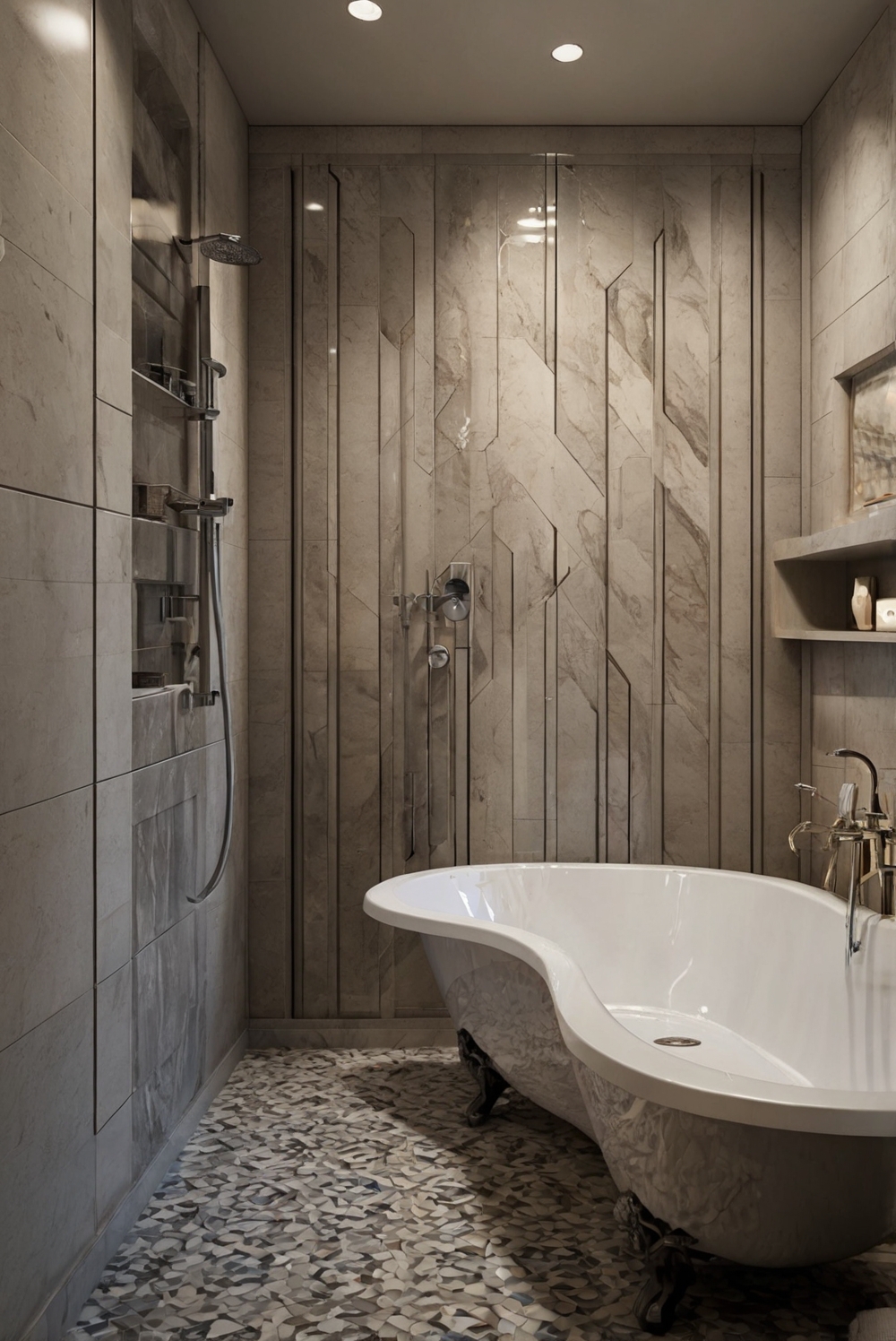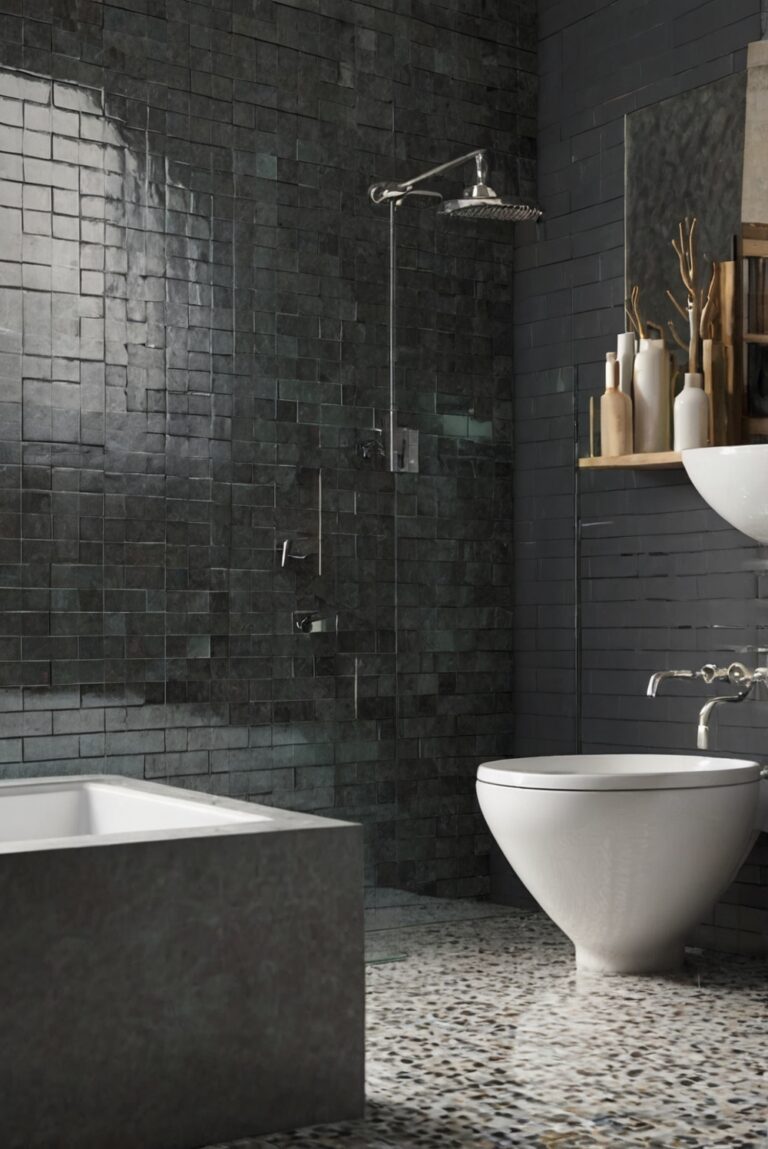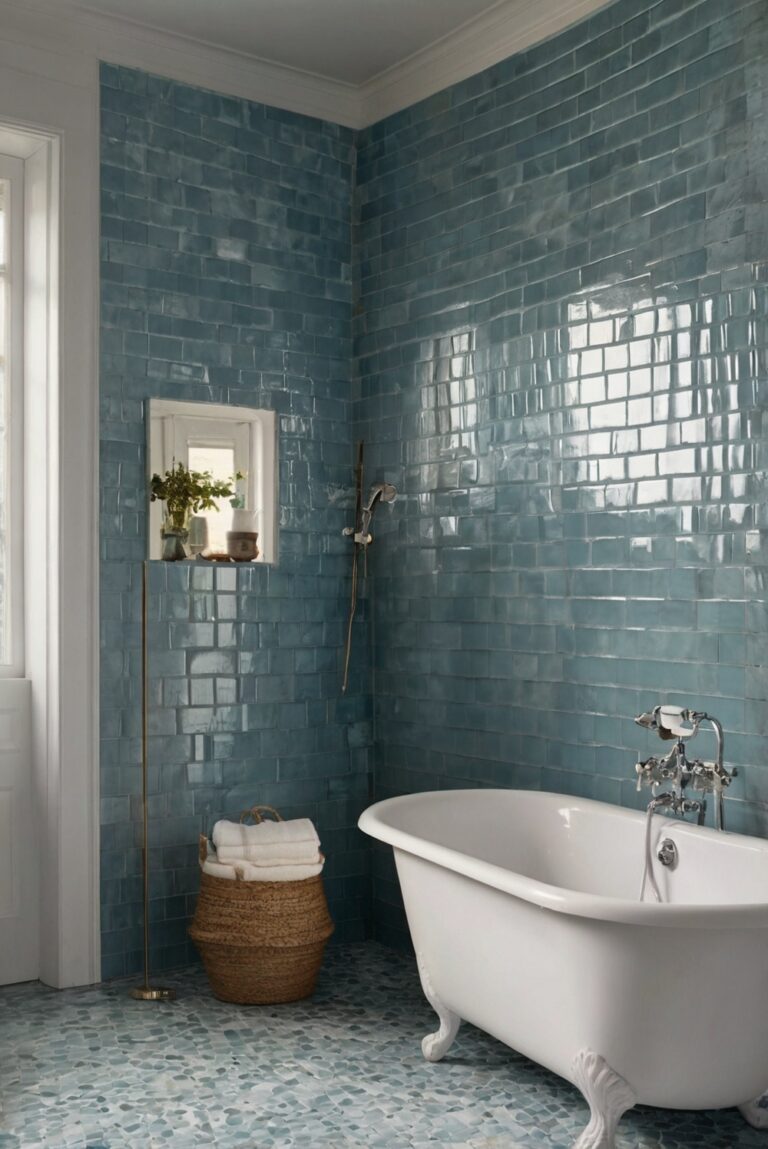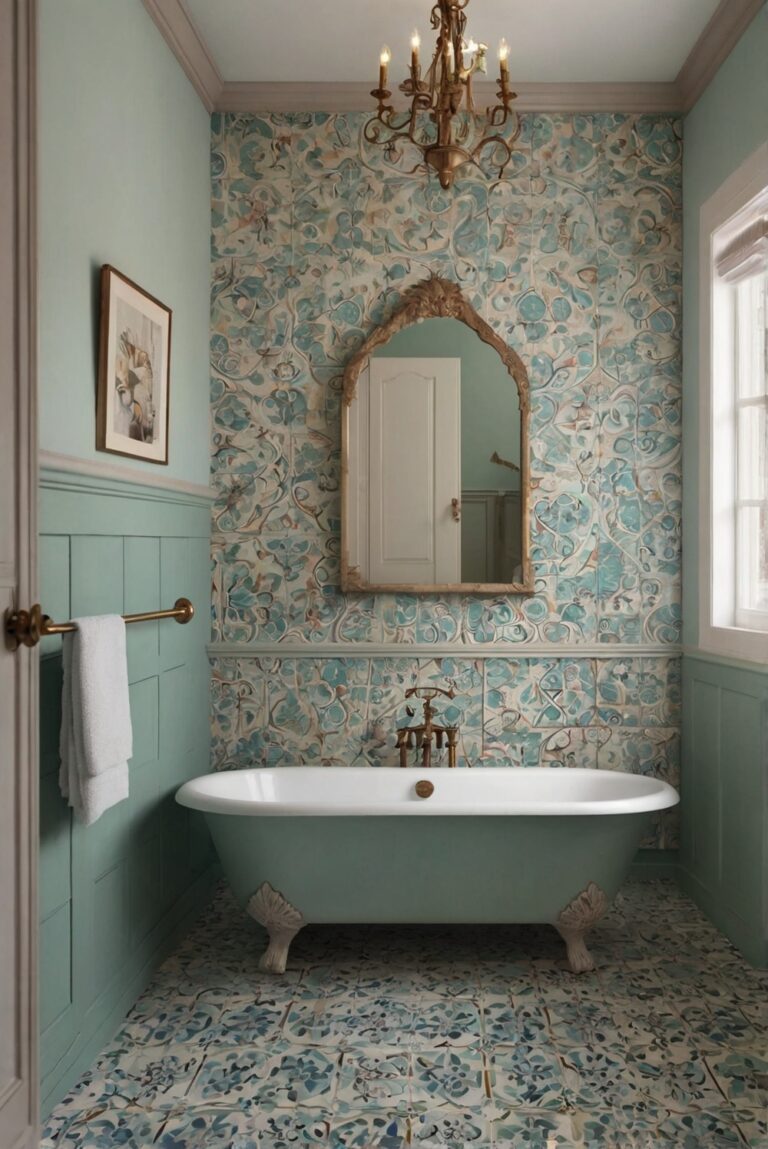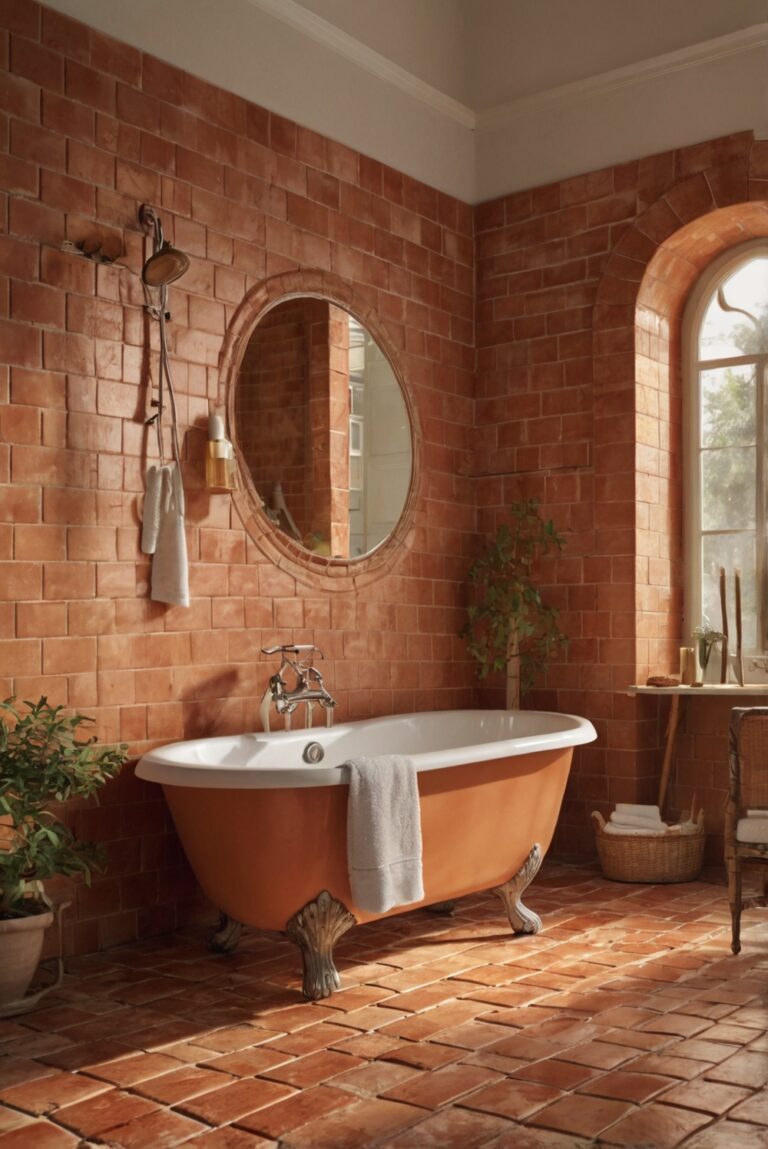Discover the ideal tile sizes for large bathrooms in this daily interior designer routine. Elevate your space with the best options for a stylish and functional design.
What are the best tile sizes for large bathrooms?
Large bathrooms benefit from using larger tiles as they can make the space look more open and less busy. Opt for tiles that are at least 12×24 inches or larger to enhance the sense of scale and create a seamless look. Larger tiles also mean fewer grout lines, resulting in easier cleaning and maintenance. Additionally, consider using tiles with a matte finish to prevent slipping, especially in bathroom environments. When choosing tile sizes for a large bathroom, prioritize functionality, aesthetics, and safety.
What are the best tile sizes for large bathrooms?
When choosing tile sizes for a large bathroom, it is important to consider the overall design and functionality of the space. Here are some key points to keep in mind:
1. Floor Tiles:
For large bathrooms, it is recommended to use larger floor tiles as they can visually expand the space and create a more seamless look. Opt for tiles that are at least 12×24 inches in size to minimize grout lines and make the room appear bigger.
2. Wall Tiles:
When it comes to wall tiles in large bathrooms, you have more flexibility in terms of size. Consider using larger format tiles such as 12×24 inches or even larger to create a modern and luxurious feel. Larger tiles can also reduce the amount of grout needed, making maintenance easier.
3. Shower Tiles:
For the shower area, large format tiles are ideal as they can help create a spa-like atmosphere. Opt for tiles that are at least 12×24 inches or larger to minimize grout lines and create a sleek and contemporary look. Consider using the same tiles on the shower walls and floor for a cohesive design.
Additional Considerations:
4. Accent Tiles:
Incorporating smaller accent tiles in a large bathroom can add visual interest and break up the monotony of larger tiles. Consider using mosaic tiles or smaller decorative tiles to create focal points or borders within the space.
5. Layout and Pattern:
When choosing tile sizes for a large bathroom, consider the layout and pattern of the tiles. Large format tiles can be laid in a variety of patterns such as straight, diagonal, or herringbone to create different visual effects. Experiment with different layouts to find the one that best suits your style and space.
In conclusion, when selecting tile sizes for a large bathroom, opt for larger format tiles for the floor, walls, and shower area to create a spacious and luxurious feel. Consider incorporating smaller accent tiles for visual interest and experiment with different layouts and patterns to achieve the desired look. By following these tips, you can create a stunning and functional bathroom that meets your design preferences and lifestyle needs.
1. What are the best tile sizes for large bathrooms?
When it comes to large bathrooms, choosing the right tile size is crucial to create a balanced and visually appealing space. Large bathrooms typically benefit from larger tiles as they can help to make the room feel more spacious and open. Popular tile sizes for large bathrooms include 12×24 inches, 24×24 inches, and even larger formats like 24×48 inches. These larger tiles can minimize grout lines, creating a sleek and modern look. However, it’s essential to consider the layout of the bathroom and the size of the walls and floors when choosing tile sizes to ensure a harmonious design.
2. How do tile sizes impact the visual perception of large bathrooms?
Tile sizes play a significant role in shaping the visual perception of large bathrooms. Larger tiles can make a space feel more expansive and open by reducing the number of grout lines and creating a seamless look. On the other hand, smaller tiles can create a busier appearance with more grout lines, which may not be ideal for larger bathrooms. By choosing the right tile size, you can enhance the overall aesthetic of the bathroom and create a cohesive design that complements the size and layout of the space.
3. Are there any specific design considerations when selecting tile sizes for large bathrooms?
When selecting tile sizes for large bathrooms, there are several design considerations to keep in mind. Firstly, consider the overall style and aesthetic you want to achieve in the space. Larger tiles are generally more contemporary and can create a clean, minimalist look, while smaller tiles may be better suited for traditional or vintage designs. Additionally, think about the layout of the bathroom, including the placement of fixtures and fittings, to ensure that the tile sizes complement the overall design and flow of the space.
4. What are the advantages of using larger tiles in large bathrooms?
Using larger tiles in large bathrooms offers several advantages. Firstly, larger tiles can make the space feel more open and expansive by minimizing the number of grout lines. This can create a sleek and modern look that enhances the overall aesthetic of the bathroom. Additionally, larger tiles require less maintenance as there are fewer grout lines to clean, making them a practical choice for large bathrooms. Moreover, larger tiles can help to visually unify the space and create a sense of continuity, especially in open-concept bathrooms where the floor and walls seamlessly blend together.
5. How can I create a cohesive design using different tile sizes in a large bathroom?
Creating a cohesive design using different tile sizes in a large bathroom involves careful planning and consideration. One approach is to use larger tiles on the main surfaces like the floor and walls, and smaller tiles as accent pieces or in specific areas like the shower or backsplash. This can create visual interest and texture while maintaining a cohesive look throughout the space. Another strategy is to use tiles of different sizes in a modular pattern, such as a herringbone or chevron layout, to add dimension and depth to the design. By mixing and matching tile sizes thoughtfully, you can create a harmonious and visually appealing space in your large bathroom.

